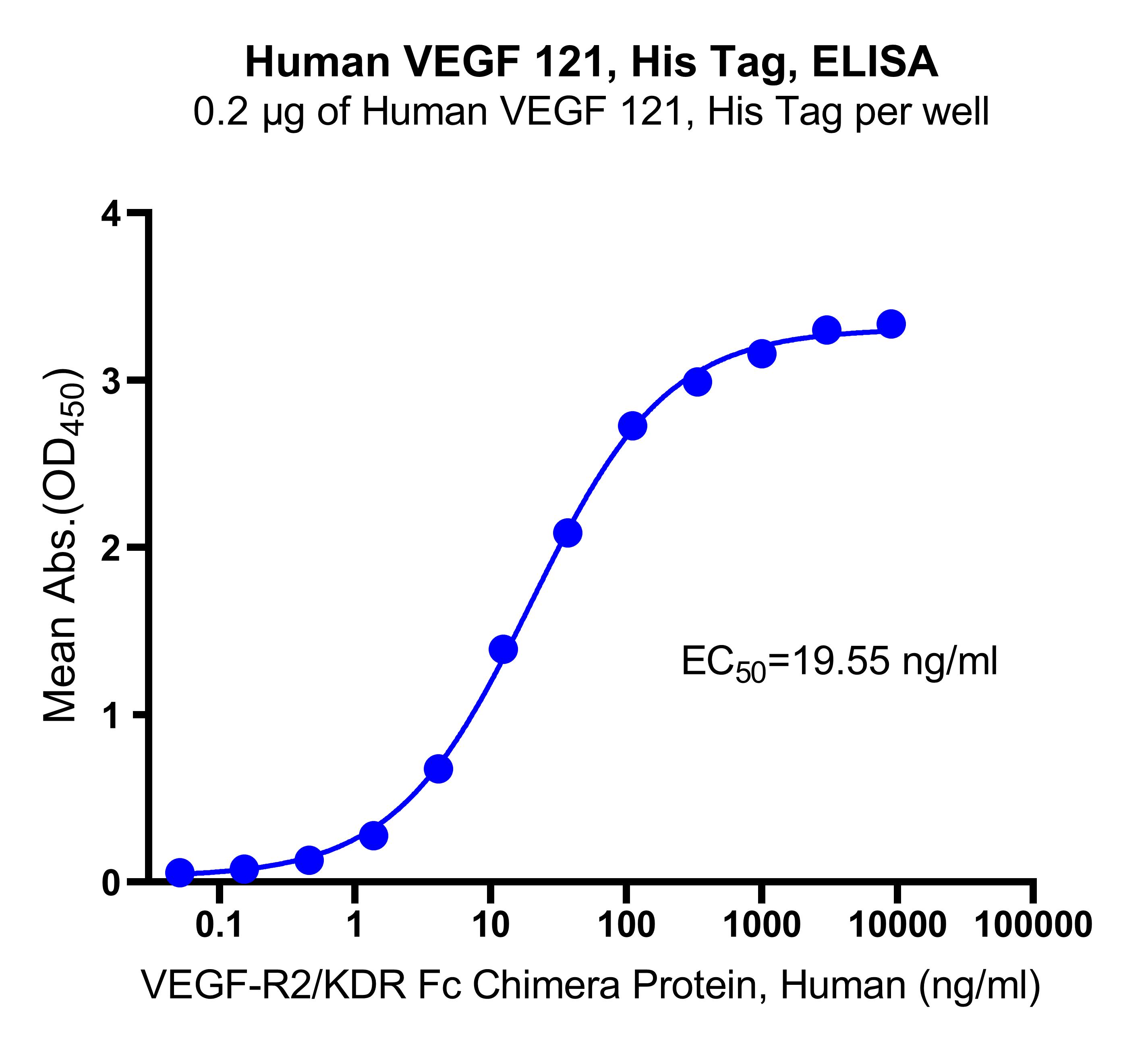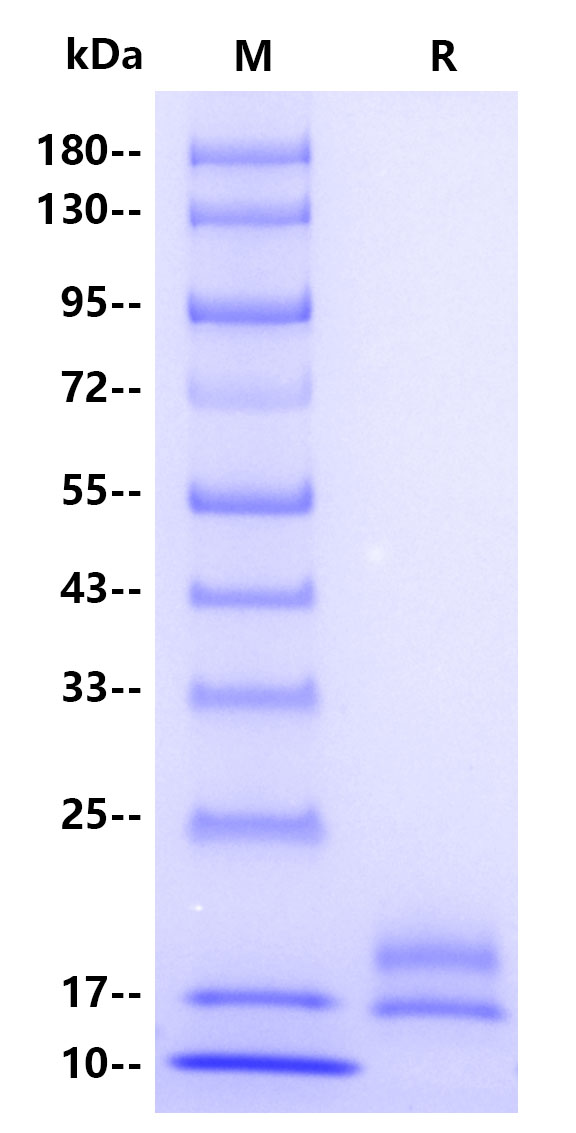Protein sequence(P15692-9, Ala27-Arg147, with C-10*His)
APMAEGGGQNHHEVVKFMDVYQRSYCHPIETLVDIFQEYPDEIEYIFKPSCVPLMRCGGCCNDEGLECVPTEESNITMQIMRIKPHQGQHIGEMSFLQHNKCECRPKKDRARQEKCDKPRRGGGGSHHHHHHHHHH
Theoretical: 15.7kDa Actual: 16,20kDa
>95% by SDS-PAGE
12 months from date of receipt, -20 to -70 °C as supplied.
1 month, 2 to 8 °C under sterile conditions after reconstitution.
Please avoid repeated freeze-thaw cycles.
Vascular endothelial growth factor (VEGF) is a signal protein produced by many cells that stimulates the formation of blood vessels. To be specific, VEGF is a sub-family of growth factors, the platelet-derived growth factor family of cystine-knot growth factors. They are important signaling proteins involved in both vasculogenesis (the de novo formation of the embryonic circulatory system) and angiogenesis (the growth of blood vessels from pre-existing vasculature). VEGF121 is the only form that lacks a basic heparinbinding region and is freely diffusible. It plays an important role in neurogenesis both in vitro and in vivo (Storkebaum et al.). It has neurotrophic effects on neurons of the central nervous system and promotes growth and survival of dopaminergic neurons and astrocytes.

Immobilized Human VEGF 121, His Tag at 4 μg/mL (50 μL/well) can bind VEGF-R2/KDR Fc Chimera Protein, Human (Cat. No. UA010144) with EC50 of 17-22 ng/mL.
